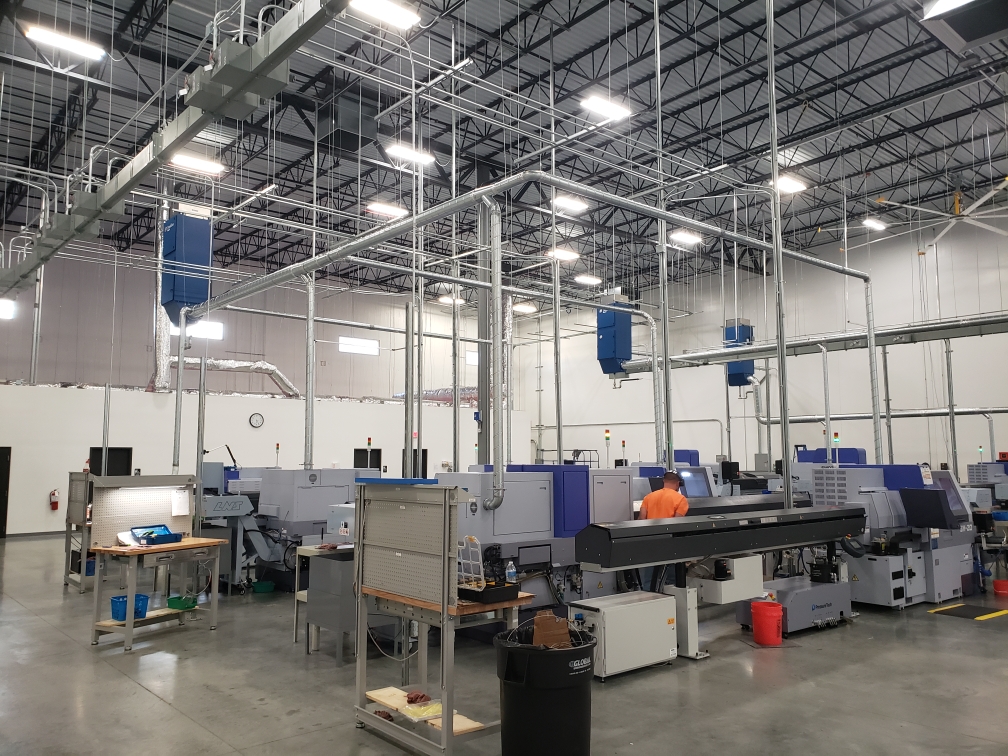 Loading... Please wait...
Loading... Please wait...Why Mist Collection?
Posted on 23rd Feb 2023
Industrial mist collection is important for a number of reasons, including:
- Health and Safety: Industrial processes that produce machining mist can create hazardous working conditions for employees. By collecting these particles, mist collection systems can help improve air quality and create a safer work environment. This mist can contain harmful substances such as metals, hydrocarbons, and other chemicals, which can be inhaled by workers and cause respiratory problems, skin irritation, and other health issues. The inhalation of oil mist over a prolonged period can lead to serious health problems such as bronchitis, asthma, and cancer. In addition to the health risks, oil mist can also create slippery surfaces, leading to potential slips and falls.
- Environmental Protection: Industrial mist can contain harmful chemicals and pollutants that can negatively impact the environment if released into the air. By collecting and removing these particles, mist collection systems help prevent pollution and protect the environment. When mist is captured and filtered the cleanliness of the entire facility is greatly improved.
- Equipment Protection: Oil and coolant mist can accumulate on machinery and equipment, causing damage. By removing these particles, mist collection systems can help extend the life of equipment and reduce maintenance costs.
- Regulatory Compliance: Many industries are subject to regulations and standards regarding emissions and pollution control. By implementing mist collection systems, companies can ensure compliance with these regulations and avoid fines and penalties.
Overall, industrial mist collection is an important aspect of workplace safety, environmental protection, and regulatory compliance. By investing in mist collection systems, companies can improve air quality, protect the health of employees, and reduce the negative impact of their operations on the environment.
Some ways to minimize the generation of coolant mist include reducing the flow rate of coolant, reducing the cutting speed and feed rate and using a high-pressure coolant system. These measures may not always be efficient or capable in a machining environment when trying to achieve the proper production result.
Ways to minimize the spread of generated mist is to remove compressed air cleaning near a machining process that can atomize mist particles and cause greater mist dispersion when used. The use of complete enclosures around a production process can contain mist. Eliminate and replace outdated or improperly sized mist collectors or electrostatic precipitators that are exhausting mist out of the blowers instead of properly capturing and handling.

Removing oil mist from a machining process involves using a mist collection system with a properly designed filter and blower to capture the mist before it can escape into the surrounding environment. Central mist collection systems that connect ductwork to multiple pieces of production equipment are very popular because in many cases running a duct network to multiple machines instead of individual units allows for an overall costs savings. Individual units that are machine mounted, ceiling hung or stand mounted are also popular if a facility layout is constantly changing or the production process is specific where the mist shouldn't be combined with other contaminants in a central system. There are several types of mist collection systems available. It is important to choose a mist collection system that is appropriate for the specific production process being used. Proper installation, operation, airflow design, capture method and maintenance of the mist collection system is also essential to ensure effective removal of the mist and protect the health of workers and the environment. The experts at Pollution Control Systems can provide full engineering, design, equipment selection and a turn key install package. Contact us today!

